I adopted two rescue cats saved from a cat hoarder - here's the advice I'd give
Adopting a rescue cat can seem fraught with problems at times - but it's worth it. Here's how I settled shelter cats Daisy and Marmalade into their new home
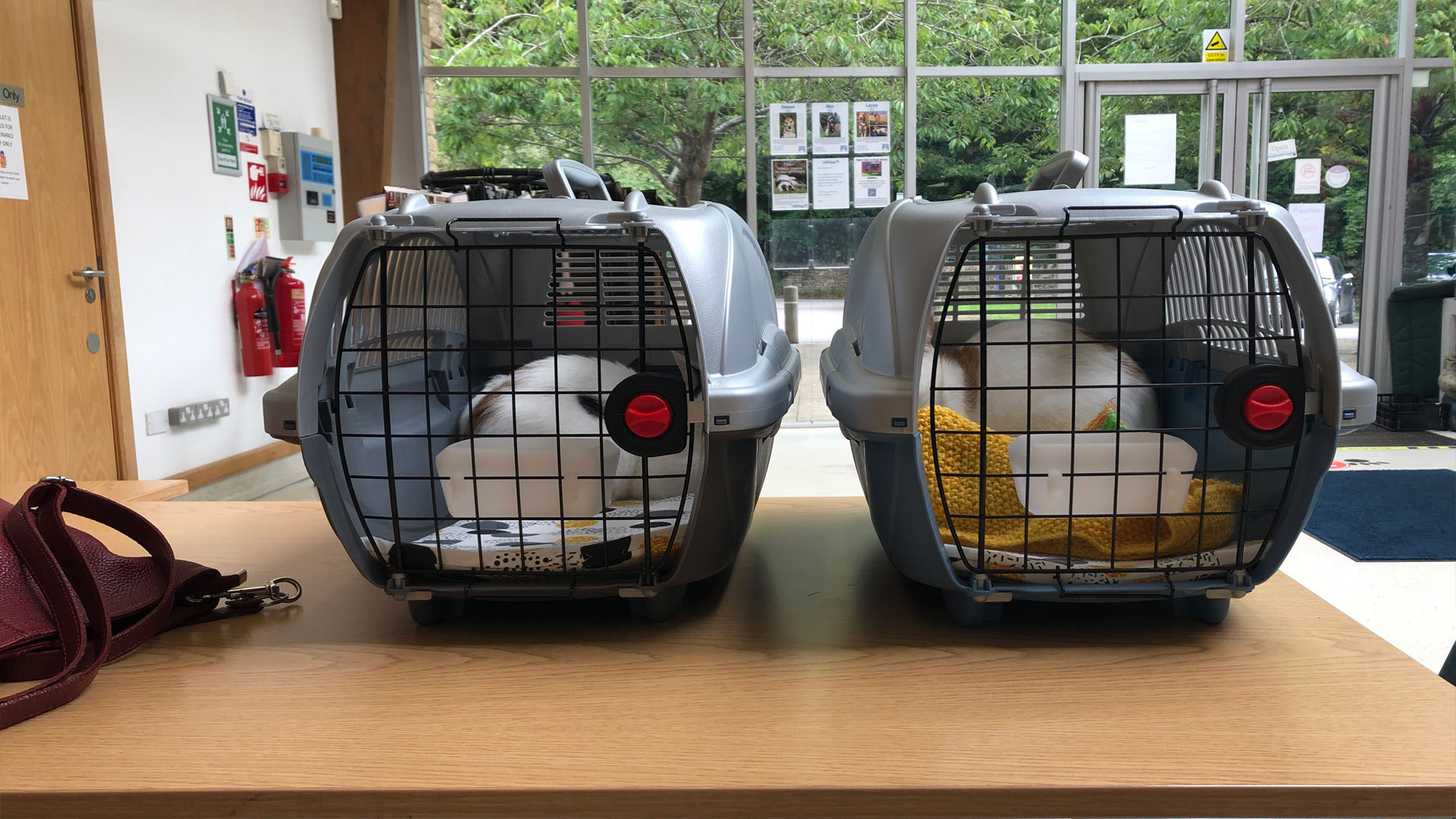
Adopting a rescue cat can be a big roll of the dice. While you can never be entirely certain of a cat's personality, even if you adopted it as a well-socialized kitten from a reputable breeder or a loving home, with a rescue cat the chances of behavioral kinks are increased.
When our previous cat Ianto died in May 2020, the country was in Covid lockdown, and aside from making his final trip to the vet a lot more traumatic for us, it meant that a few weeks later, we weren't in a position to find new cats to fluff the place up. Our local animal shelter was locked down, and while it turned out that both of us had been quietly gazing at its gallery of cats up for adoption, the shelter wasn't taking applications for adoption.
However, after checking back, I received a phone call from the shelter, asking if there were any cats of theirs that we were particularly interested in. The one at the top of our list had already been reserved, but there were two more that had caught our eyes: Daisy and Marmalade.
The shelter explained that Daisy and Marmalade had been rescued from a cat hoarder, from a home with about 30 cats, and that neither of them had settled down well at the shelter; both were very scared cats who didn't want anything to do with the shelter staff, and the shelter had been hoping that someone would adopt the pair of them.
Cat hoarders are a strange phenomenon. I don't think anyone sets out to be a cat hoarder; in most cases someone starts out with a cat or two, then kittens happen, and then more kittens happen, and they end up with a house that's overflowing with cats (and possibly fleas too; both Daisy and Marmalade had to have a full flea treatment at the shelter).
Sadly the majority of these cats don't get enough human interaction; kittens don't learn that it's nice to be picked up and cuddled, and they instead learn that humans are weird food dispensers that are best avoided.
Here's the challenges I faced with my rescue cats and how we overcame them together:
1. They exhibited great fear
I'd go so far to say that Daisy and Marmalade came to us effectively feral. We didn't quite anticipate just how scared they were of people. Once we got them home and took them to their separate rooms (in actual fact our home offices), they both hid.
Marmalade initially hid in his litter tray, while Daisy wedged herself behind the S-bend of a toilet for most of a day. Neither of them wanted anything to do with us, but we worked on them. By putting them in our home offices, we figured that our regular presence would soon wear down any resistance. We were half-right.
We'd provided them both with plenty of the best cat toys, and on the very first night I was able to lure Daisy out from behind the toilet for a game. I sat on the floor trailing a squeaky toy mouse on a teasing stick around, and her inquisitiveness got the better of her. She emerged, and had a fun little chase for a good few minutes, while resolutely keeping her distance from me.
Emboldened by this, I tried the same approach with Marmalade. Sadly he was not playing; his squeaky mouse proved too scary for him, and he wedged himself further into his hiding place, refusing to come out.
Still, we persisted with both of them, and after about ten days in my office, one evening Daisy, completely out of the blue, came up to me with her tail in the air, clearly soliciting a fuss. I put a hand out, she flicked her tail against it and then came around for a proper stroke. That was a very happy moment; ever since then she's absolutely loved a good fuss, and it wasn't very long until I was able to brush her as well.
Marmalade, on the other hand, was not so forthcoming. In short: it was roughly three months before he'd let our hands anywhere near him, and much longer until we got anything resembling a purr out of him.
As well as being a generally fearful cat, he was weirdly inhibited; it felt like if he caught himself purring he'd stop himself, and what came out for a while was a weird grunt, and similarly he'd stop himself putting his tail in the air if he was in any danger of enjoying himself. You could see from the strange attitude of the base of his tail that he was making every effort to keep it low.
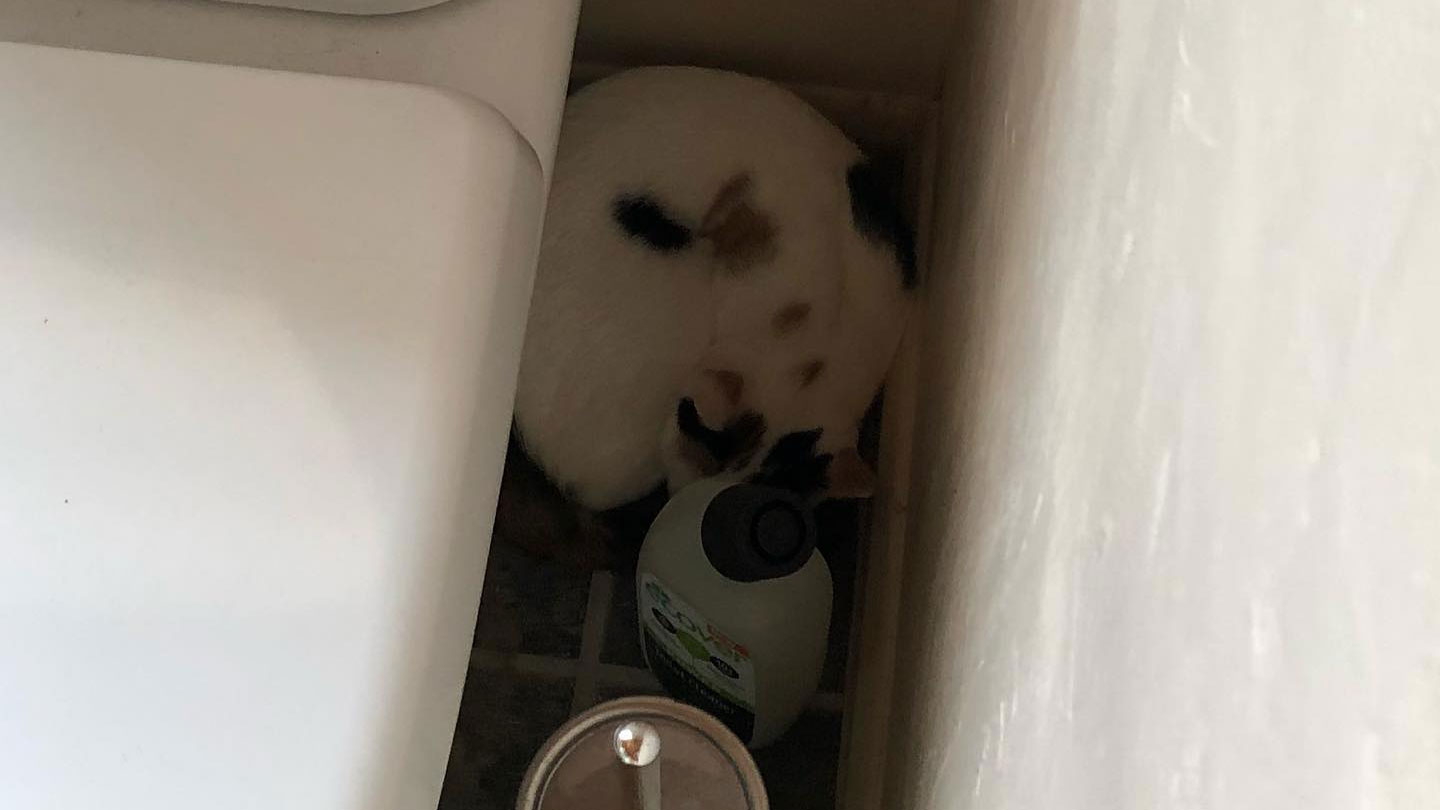
2. They struggled around people
We know very little of Daisy and Marmalade's lives before they were rescued; we know that they came from a cat hoarder, and we can infer from their behavior since they've been with us that they were never handled as kittens, and that they'd never been outside.
Aside from looking very similar, both cats share similar quirks to different extents; they hate being picked up, they're unable to conceive of the possibility of sitting on a human lap, and – when they came to us at least – they absolutely did not want to be touched by people.
3. They hadn't been neutered
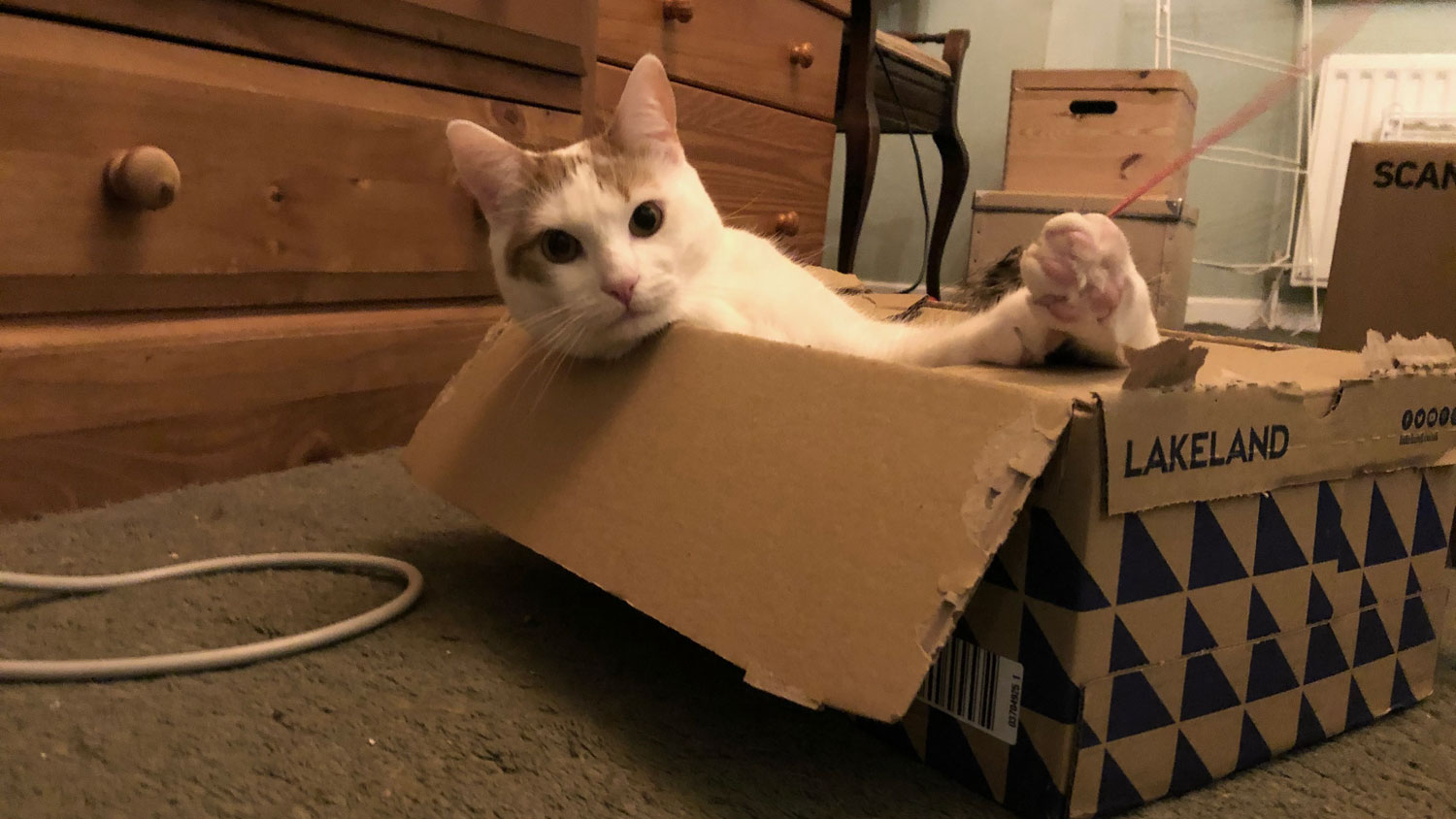
It wasn't all bad news, though. Their mother had clearly taught them most of the important cat lessons. They knew how to use a litter tray and neither of them has ever sprayed (or worse) around the house.
However, one important detail was that they were about a year old when they were rescued, and as is often the case with cats rescued from hoarders, they hadn't been neutered. This meant that they had to be housed separately at the shelter, and after neutering they were still kept separate for about three months before coming to live with us.
4. They needed to be re-introduced to one another
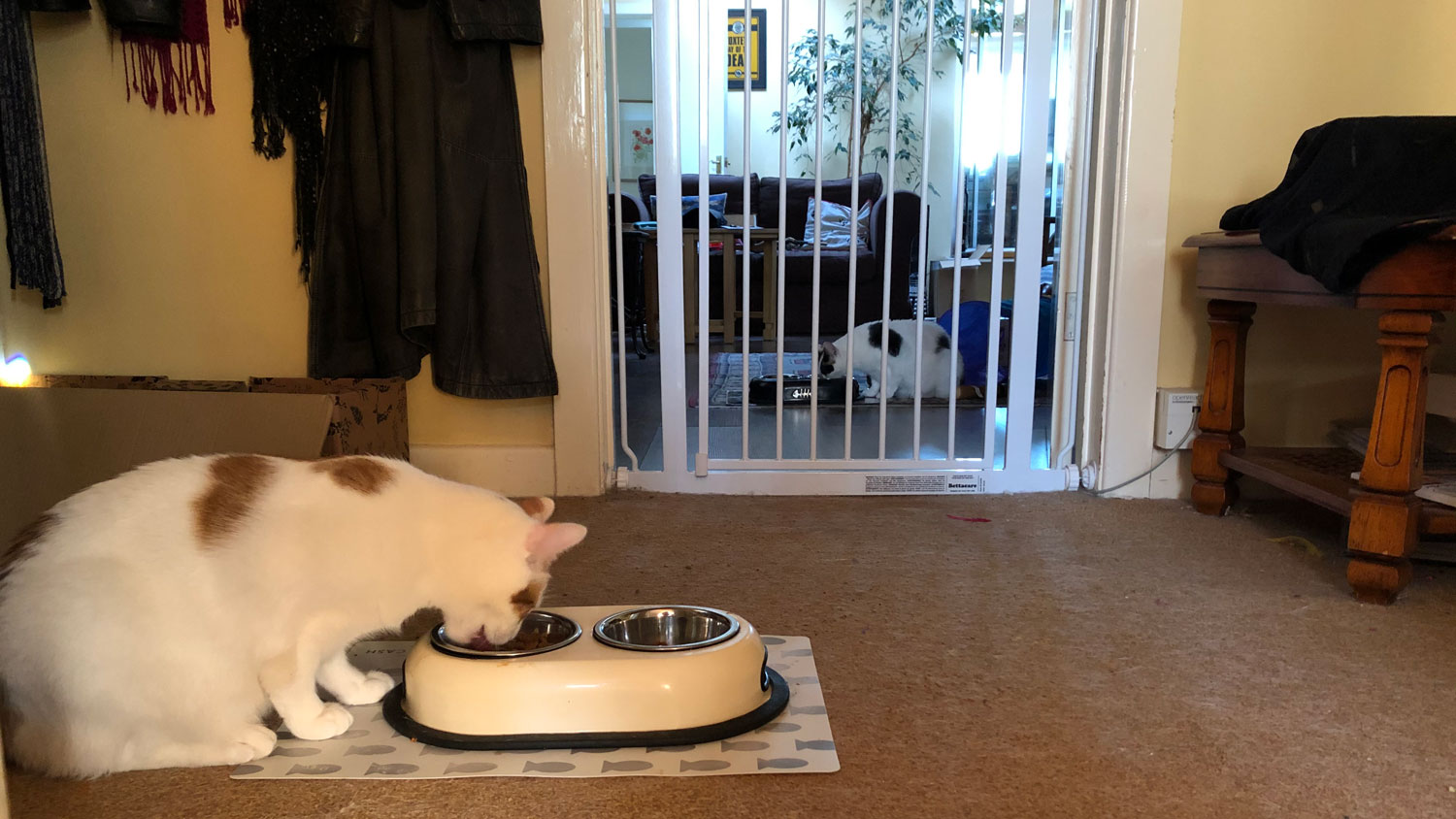
Even the most closely bonded cats can forget each other if, say, one of them has to stay at the vets for a few nights.
We don't know how bonded Daisy and Marmalade were, if at all, and didn't appreciate the challenges of trying to re-introduce them to each other. Observing their behavior with each other, I'd guess that while Marmalade completely forgot Daisy, Daisy definitely remembers her brother.
After they'd been with us for a few days, we noticed at times that they'd both sometimes sit at windows where they were able to see each other, and we took this as a sign that they might be ready to be re-introduced. This turned out not to be the case; the first time we tried, Marmalade launched himself at Daisy in a very aggressive manner, and the introduction was cut short.
Another attempt saw Daisy approach Marmalade with her tail in the air – a very positive sign, as any student of cat communication will tell you – but again Marmalade reacted aggressively.
Consequently I went into research mode and read just about everything online about introducing cats to each other, as well as exchanging a lot of emails with behaviorists from the animal shelter.
We've tried scent swapping, I bought a pet gate that enables us to feed them their meals in full view of each other, and we have regular sessions playing with them either side of the gate.
What we've learned is that despite Marmalade being roughly twice Daisy's size, he's scared of his little sister and thinks the big cat wants to kill him; whenever she gets too close for his liking, his instinct is to lash out.
We've been working on this for a long time now, and we're making progress; however any progress made with Marmalade is glacially slow. He seems to have so many deep-seated issues that working through them takes forever, and there have been plenty of points along the way where we've despaired of ever getting him to settle down fully.
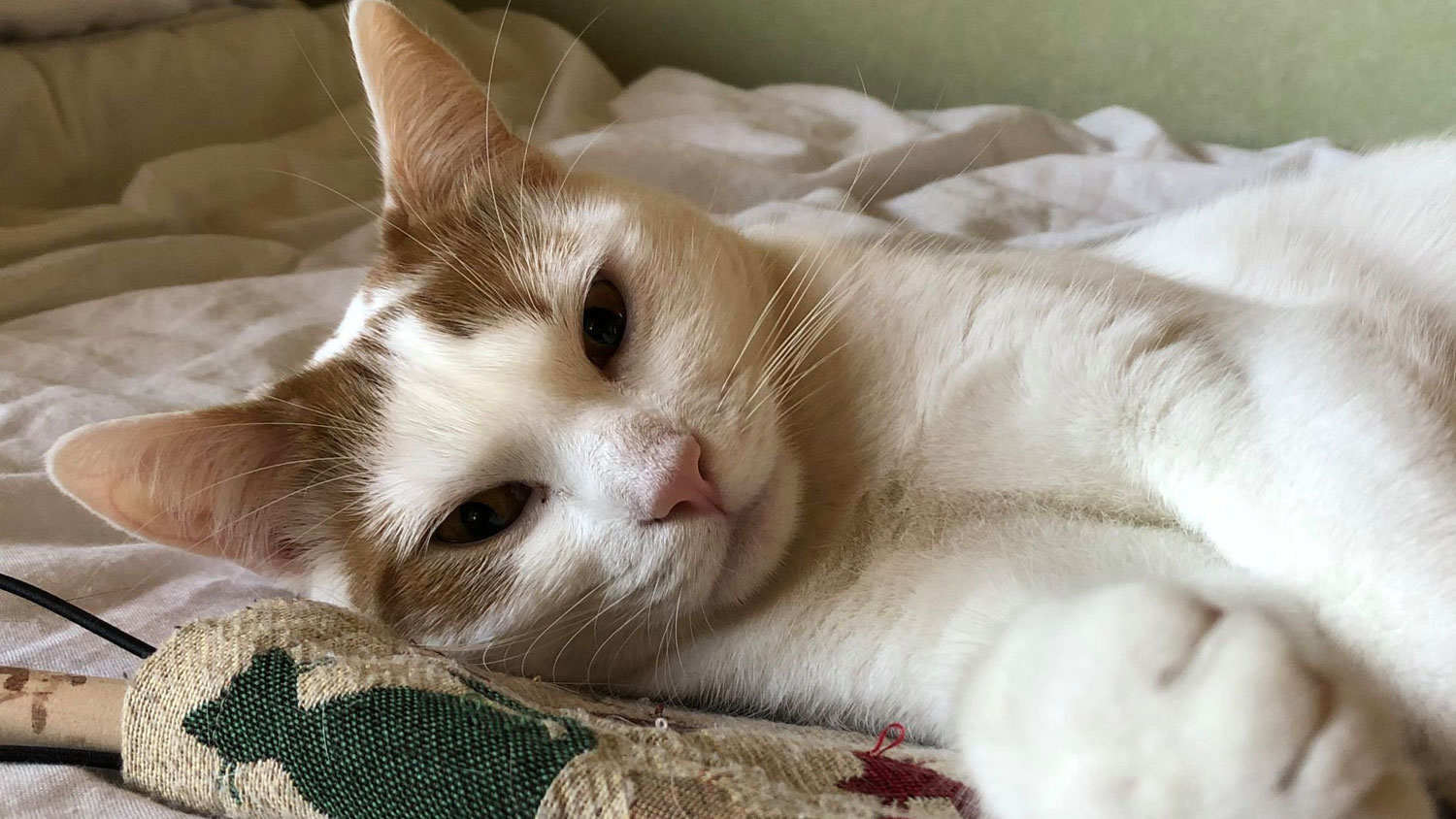
How I settled my rescue cats into their new home
1. I used positive reinforcement
There has been progress, though. It took about six months for Marmalade to accept fuss from us for any length of time before the claws came out, and now after much persistence and positive reinforcement, he absolutely loves a good fuss and, in recent weeks, has even started sleeping on our bed at night.
I've also been trying to train him to be less scared of laps by sitting quietly and putting delicious cat treats on my lap, and he's gone from swiping them off with his paws to eating them straight off my lap, and even standing on my lap to reach a treat placed the other side. The thought of actually sitting on a human lap is still completely incomprehensible to him, though.
2. I slowly encouraged human contact
Daisy too, is less scared of human contact, and I've been training her in being picked up; the first time I tried picking her up she completely panicked, but I kept on trying every day and now she almost sort of enjoys it, at least for a couple of seconds.
And while she's also completely confused about laps, we're now at a point where if she's asleep on my office chair, she won't immediately flee if I try to perch on the edge of it next to her, and I've even got her to put a paw on my lap a couple of times.
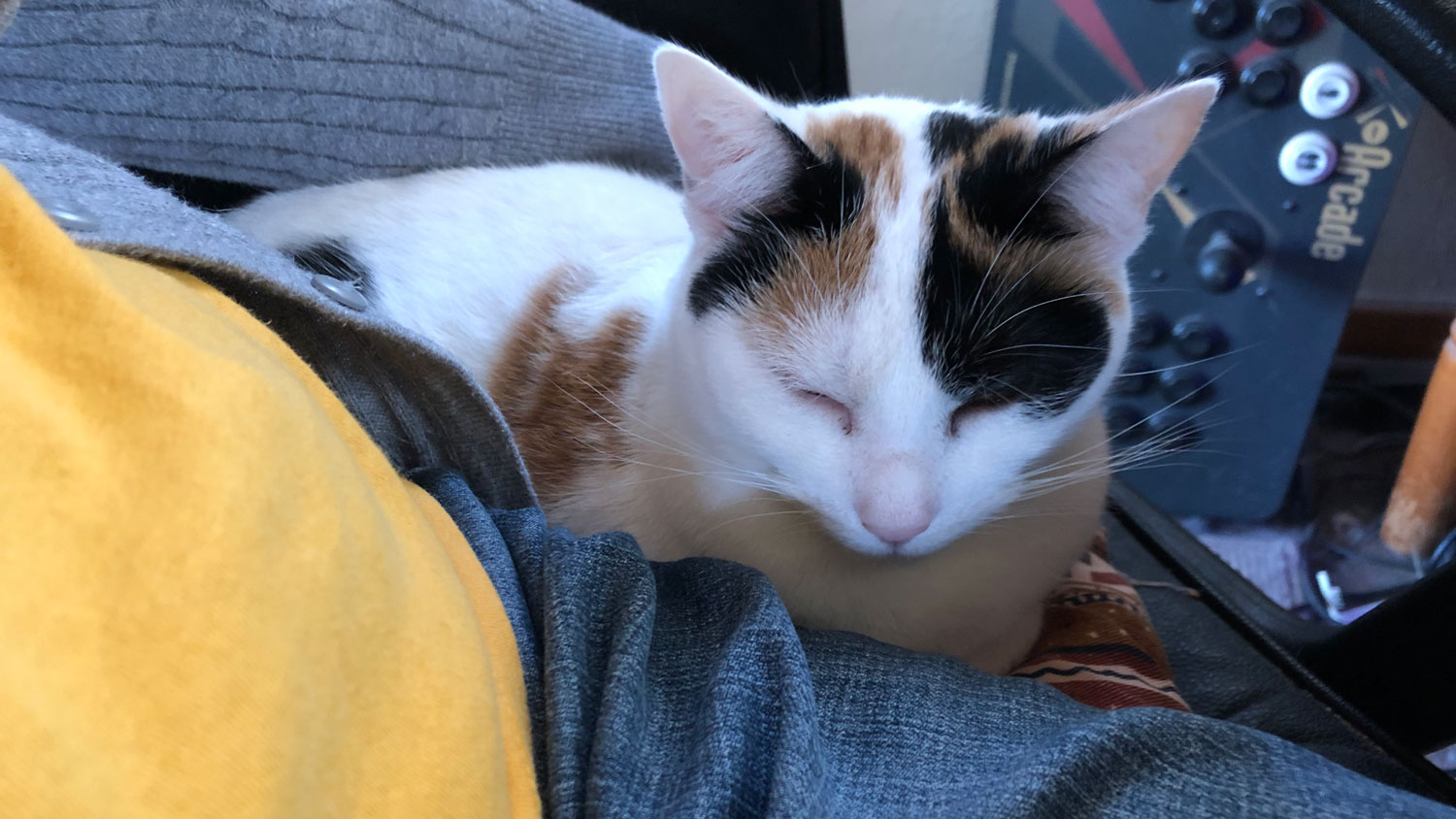
3. I've found it's ok to have an indoors cat
Daisy has a much fuller life now, ever since we made the decision last year to try letting her out. Her first trip into our garden didn't last very long before she fled back inside – I think outside was a whole lot bigger than she expected – but she's a very outgoing and inquisitive cat, and she didn't need much encouraging to try again and explore the neighborhood.
I think it took an hour for her to try to pick a fight with the elderly Siamese who used to be Ianto's arch-enemy.
Marmalade, however, remains very much an indoor cat, something that my partner's less comfortable with than I am, I think because I grew up with a pair of indoor cats due to the fact that we lived next to the sort of road that's a feline death trap.
For all his progress, Marmalade is still a generally fearful cat who's easily spooked, and while I hope the day will come when we can let him out, right now he's not ready.
4. I used calming pheromone products
We're still working on Marmalade and trying to build his confidence and get him more used to Daisy, and we seem to be very slowly moving in the right direction, helped by encouragement, treats and Feliway.
He seems to be getting to a point where we can make a concerted and informed effort to try and sort his and Daisy's differences out; I just don't want to be too hasty and get them into a situation where they end up fighting.
Looking ahead
As I mentioned at the start, rescue cats can be a roll of the dice, but I think there's a lot to be said for giving an unfortunate feline a second chance, even if it comes with a bunch of rough edges.
It's worth knowing though – as we didn't fully appreciate at the time – that a cat rescued from a hoarder may well have a whole load of baked-in issues that may take a very long time to iron out, if you ever manage it at all.
We didn't have the opportunity to meet Daisy and Marmalade in person before adoption, and in retrospect that was a big mistake; however nobody was really thinking straight in 2020, and ultimately things could have worked out a lot worse.
Both of them are absolutely lovely cats individually, and I'm still working towards getting them to at least ignore each other and cohabit peacefully, even if they never turn out to be super best friends. Sadly they may yet have to be housed separately, but for now we live in hope.
PetsRadar Newsletter
Get the best advice, tips and top tech for your beloved Pets
Jim is a writer, performer and cat-wrangler based in Bath, who last year adopted a pair of sibling rescue cats who turned out to be effectively feral, and has spent a lot of time since then trying to get them accustomed to people (some success) and each other (ongoing project).

